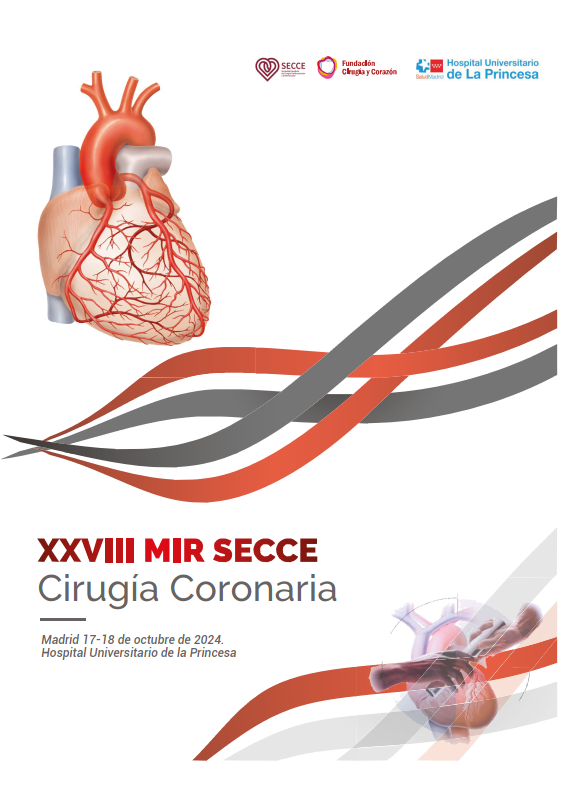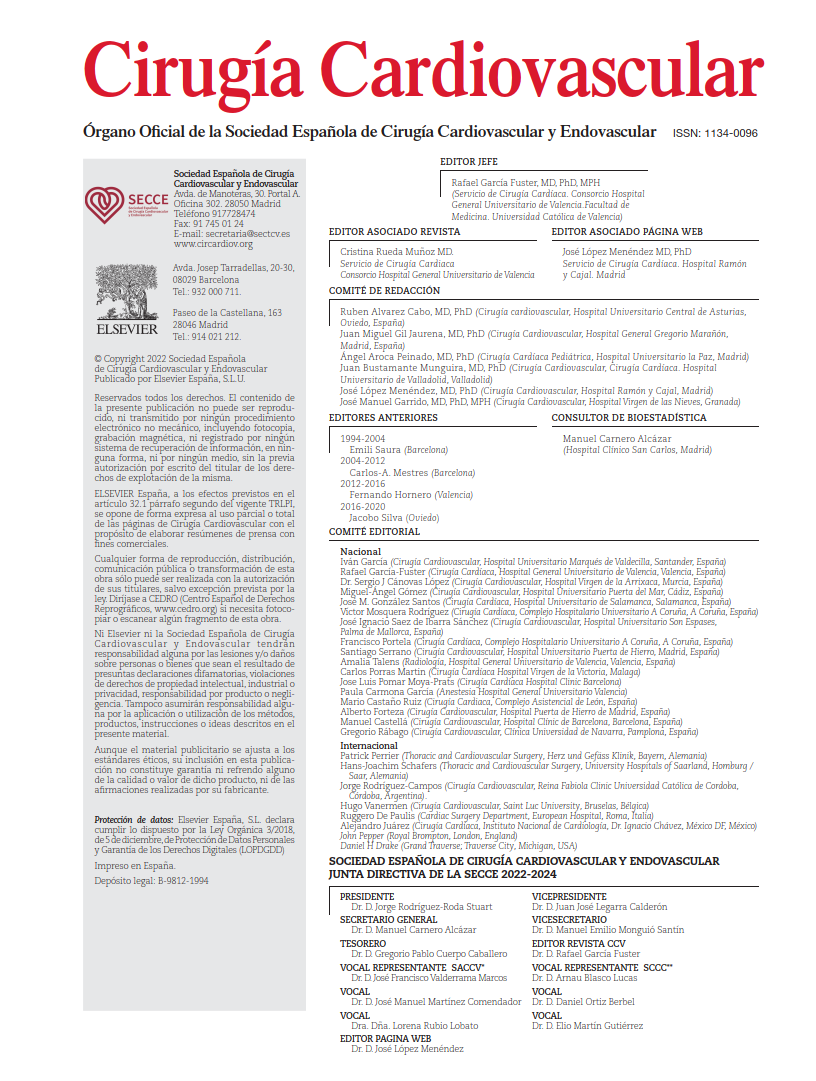The benefits of valve repair in general—and aortic repair in particular—for the treatment of valvular insufficiency are well established. While in the case of the mitral valve, widespread adoption of the repair approach has led it to become the standard of care, in the setting of aortic valve disease, prosthetic replacement remains the prevailing standard.
However, in experienced centers with high reparability rates, valve-sparing techniques for the aortic valve should arguably also be considered the standard approach. Aortic insufficiency is frequently associated with dilation of the aortic root and ascending aorta, meaning that functional etiology far outweighs organic forms. In this context, reimplantation procedures, namely the David operation, are among the preferred surgical options.
Before delving into the study outcomes, it is noteworthy that the authors favor the use of the modified David V technique. This approach involves the use of separate, straight grafts for aortic root and ascending aorta replacement, allowing construction of a neosinotubular junction. While other groups advocate the routine use of a 34-mm graft for root replacement, the authors individualize graft selection—favoring 28–30 mm in women and 30–34 mm in men—based on body surface area (BSA). In fact, the most commonly used graft diameter for the root was 30 mm. Graft selection followed this algorithm: 34 mm in men and 30 mm in women with BSA of 2–2.5 m², 32 mm in men and 28–30 mm in women with BSA of 1.5–2 m², and 30 mm in men and 28 mm in women with BSA <1.5 m². For subannular fixation and reduction of the aortic annulus, 10 subannular pledgeted sutures were anchored over a Teflon felt strip. The sutures were tied down over a Hegar dilator in the left ventricular outflow tract (LVOT) to avoid overcorrection. Dilator sizing was determined by patient sex and BSA: 23 mm in men and 21 mm in women for BSA 2–2.5 m², 21 mm in men and 19 mm in women for BSA 1.5–2.0 m², and 19 mm in men and 17 mm in women for BSA <1.5 m². In practice, the average Hegar size was 21 mm.
In contrast with the David procedure using Valsalva grafts, the authors favor the use of a straight graft for the aortic root, providing greater freedom in commissural reimplantation height. In the Valsalva approach, graft sizing is typically based on the subcommissural triangle height between the left and noncoronary cusps, which constrains the commissural height and may impair coaptation, particularly when the leaflets are elongated due to aortic insufficiency. A straight graft allows for reimplantation at a potentially higher level than that dictated by the native valve geometry, reducing the need for free edge plication. Additionally, compared with the nearly systematic use of 34-mm grafts in some centers, the authors’ approach with smaller grafts allows for better correction of dilated root dimensions.
Regarding leaflet repair, the authors prefer figure-of-8 sutures over simple stitches, considering them more durable in fragile valve tissue. Notably, they do not elaborate on graft selection for ascending aorta replacement and neosinotubular junction reconstruction. At our institution, the choice of ascending graft diameter also follows an approach analogous to that of the Valsalva technique: the diameter corresponds to the native sinotubular junction. An initial measurement at the subcommissural triangle, in conjunction with assessment of leaflet free-edge correction, helps determine the degree of neosinotubular correction required. Using diameters close to that of the root graft (almost always 34 mm in our experience) helps restore adequate free edge tension. Smaller diameters may reduce commissural and leaflet tension but risk insufficient coaptation height.
The present series summarizes a single-surgeon experience from 2002 to 2024 involving 528 patients who underwent modified David V aortic root reimplantation. In addition to the remarkable procedural volume, the cohort had particularly favorable baseline characteristics: mean age was 48 years, mean body mass index 27 kg/m², atrial fibrillation prevalence as low as 7%, and low comorbidity rates (2.7% prior stroke, 12% chronic obstructive pulmonary disease, 3.5% peripheral artery disease). Notably, 38% of patients had a connective tissue disorder.
From a technical standpoint, leaflet repair was required in 20% of cases, affecting a single cusp in 76%, two cusps in 20%, and all three cusps in 4%. Commissuroplasty was the most frequently applied technique (80% of those requiring repair), while free edge plication accounted for only 18%. Triangular resection of at least one cusp was performed in 15%. These findings are noteworthy given the general consensus favoring midline free edge correction to enhance long-term durability. Commissural-based repair may increase leaflet tension, potentially predisposing to late failure. Other leaflet-sparing procedures—such as bicuspidization, perforation closure, pannus debridement, or pericardial patch reconstruction—were rare.
In terms of operative outcomes, mean aortic cross-clamp and cardiopulmonary bypass times were 77 minutes (range 62–106) and 91 minutes (range 73–130), respectively. Surgical mortality was 0%. Major complications occurred at very low rates: pacemaker implantation in 0.6%, stroke in 0.8%, and reoperation for bleeding in 1.4%. Postoperative atrial fibrillation developed in 28%, while the incidence of deep sternal wound infection or mediastinitis was 0%.
During follow-up, freedom from reoperation at 15 years was 95%. Moderate or severe residual aortic regurgitation was present in 6.2% of patients at 1 year and 10% at 10 years. Of the 14 patients who required reintervention, 43% did so due to progression of aortic insufficiency, 14% due to aortic stenosis, 14% due to infective endocarditis, and 7.1% due to aortitis. The most frequently performed procedure was surgical aortic valve replacement with prosthesis (57%), followed by transcatheter aortic valve implantation (TAVI, 14%) and the Bentall-De Bono procedure (7.1%). Actuarial survival was 93% at 10 years and 87% at 15 years.
Although many subanalyses were presented graphically without accompanying numeric values, several key points merit commentary. When comparing bicuspid versus tricuspid aortic valves (BAV vs TAV)—with BAV comprising only 4.3% of the series—postoperative hemodynamics and progression of aortic insufficiency were less favorable in the bicuspid cohort. At 15 years, freedom from reoperation exceeded 97% for TAV, whereas BAV patients had shorter follow-up, with a 3-year reintervention-free rate of approximately 87%. Interestingly, outcomes did not differ significantly based on the presence or absence of connective tissue disease.
In conclusion, the technique developed and implemented at the Cleveland Clinic has yielded outstanding results, making the proposed modifications both reproducible and reliable.
COMMENTARY:
There is little left to add in praise of the outcomes reported in this impressive series. The David operation has long been perceived as an elite technique, accessible only to highly specialized surgeons. The experience presented—although extensive, encompassing nearly 500 patients—stems from a single operator, Dr. Lars G. Svensson. Yet the technical modifications detailed herein have enabled a stepwise approach that moves toward procedural democratization. This represents a shift from the exclusive “I do it this way,” once stated by Dr. G. ElKhoury to an eager audience, to a standardized protocol accessible to experienced surgeons in many centers.
That said, if reproducibility were the primary goal, one might lament that the study reflects the practice of a single surgeon whose perioperative outcomes seem multiple standard deviations above the mean. Nonetheless, based on personal experience, the adoption of systematic steps—whether for this or other operations—is the cornerstone of success and reproducibility. Beyond the nearly 500 expertly treated patients, the most enduring contribution from Dr. Svensson may be his formalization of key modifications to the reimplantation technique, rendering it both teachable and consistent.
Given the diversity of existing approaches, a unified consensus on the optimal strategy for valve-sparing aortic root replacement is still lacking. Until such agreement is reached, what remains essential is to adhere to best practices—whichever school one follows—and to execute them with excellence.
REFERENCE:
Chemtob RA, Rajeswaran J, Kalahasti V, Griffin BP, Desai MY, Kapadia SR, et al. Early and late experience of the modified aortic reimplantation operation. J Thorac Cardiovasc Surg. 2025 Jul;170(1):126–134.e6. doi: 10.1016/j.jtcvs.2024.08.025.



